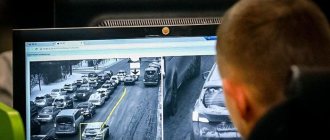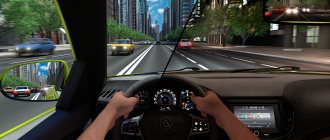Why is such research needed?
Drug intoxication examinations are carried out in specialized 24-hour medical offices by appropriate staff with certain qualifications. During such a study, medical workers will have to determine whether a person is in a state of drug intoxication.
The purpose of such a drug intoxication examination is to accurately determine the absence or presence of a state of intoxication, to document the fact of the use of narcotic drugs, psychotropic, intoxicating, psychoactive or other dangerous substances that can cause such a state. After all, a person loses control over his actions and can pose a real threat to himself and others.
Such a medical examination for drug intoxication includes several stages:
- A thorough examination conducted by an experienced and professional narcologist-psychiatrist.
- Examination of the air exhaled by a person suspected of using illegal substances for the presence of alcohol. This is a mandatory point of investigation, even when a citizen is brought in to find out whether he has used drugs.
- Determination of the presence of psychoactive substances in urine.
- If such substances are found there, their concentration in the biomaterial is examined.
- A study of the level of psychoactive substances contained in the blood is also carried out.
Is it possible to refuse a urine test and still have your license?
If the traffic police inspector insists on performing an express test on the road, then the driver has the right to refuse it. In this case, deprivation of a driver's license is illegal and the inspector does not have the right to carry it out.
If a traffic police officer demands to undergo a medical examination procedure and the driver does not agree, then for refusal he may be deprived of his license on the basis of Article 12.25 of Part 1 of the Code of Administrative Offenses.
How should the examination be carried out?
The examination procedure is carried out in the following order:
- A traffic police inspector who stopped a driver who is allegedly under the influence of drugs must identify one of the following signs to confirm his condition in accordance with clause 129 of Order of the Ministry of Internal Affairs of Russia dated March 2, 2009 No. 185:
- smell of alcohol on the breath;
- unstable position of the body;
- disruption of the speech apparatus;
- sharp redness, blueness or an unnatural shade of the face;
- inappropriate behavior.
- After identifying at least one of the signs, the inspector has the right to remove the driver from driving a vehicle in accordance with Article 27.12, Part 1 of the Administrative Code. In this case, the driver must write down or photograph the traffic police inspector’s badge number and the details of his service ID. These actions are legal, and they are carried out in accordance with paragraph 3 of clause 2.4 of the Traffic Regulations: persons who have the right to stop a vehicle are required to present a service ID at the request of the driver. The inspector, in turn, must perform the following actions:
- invite two witnesses for examination or make a video recording (in accordance with Article 25.7 of Part 2 of the Code of Administrative Offenses);
- if witnesses were invited, then the traffic police officer, in their presence, fills out protocol No. 91 “On removal from driving a vehicle” (in accordance with Article 27.12, Part 3 of the Administrative Code).
Reference! Protocol No. 91 must indicate the date, time, place, reason for removal from driving, position, surname and initials of the inspector and driver. Vehicle details must also be provided;
- if witnesses were not invited, then in the protocol in the empty field of the column “Witnesses” the driver must put a capital Latin letter Z and in the comments below indicate the following information: there were no witnesses, the driver did not use anything and he does not agree with the inspector about the accusation.
Important! The last sheet of the copy of the protocol must remain with the driver. It must be filled out by the person who drove the vehicle, without amendments by the inspector;
- After drawing up the inspection report, the traffic police inspector may offer to undergo a rapid test at the place of arrest, which can detect narcotic substances in the driver’s urine. However, the driver has the right to refuse, after which the inspector must send him for a medical examination to a specialized institution.
More on the topic: Fine for dirty and unreadable license plates
Inspection process
Now we will analyze in detail the procedure for testing for drug intoxication. After an examination by a psychiatrist-narcologist, the exhaled air is examined for the presence of alcohol vapors. Such a study is carried out at intervals of 20-25 minutes. However, if the result is negative during the first test, then a repeat examination of the exhaled air is no longer carried out.
The result of this test is recorded using specialized measuring equipment and recorded on paper and electronic media. These are the requirements of current Russian legislation.
Examination of car drivers
Most often, vehicle drivers are brought to a drug treatment clinic for appropriate examination. If, during an inspection or checking documents, a traffic police inspector has strong suspicions that the driver is under the influence of alcohol or drugs, he invites him to undergo an appropriate study.
When such a driver is brought to a drug treatment clinic for the purpose of conducting a study, complaints and anamnesis are first collected, as well as a visual and detailed examination, which can reveal clinical signs of intoxication in a person.
Next, regardless of the results of testing the exhaled air for the presence of alcohol, biological materials are collected and sent for chemical and toxicological testing. These include blood and urine.
Driver candidates will be tested for chronic alcoholism and drug addiction
https://static.news.ru/photo/18747f90-2dcc-11ea-9d9a-fa163e074e61_660.jpg Photo: Konstantin Kokoshkin/Global Look Press
Russian driver candidates will be required to take tests to check for chronic alcoholism and the presence of prohibited substances in the body, including opiates, cannabinoids, cocaine and methadone. Kommersant talks about the new order of the Ministry of Health of the Russian Federation regulating the procedure for obtaining medical certificates within the framework of driving commissions.
According to the publication, the Ministry of Health is establishing new rules for the examination of drivers and driver candidates. The document is currently being assessed by the Government Analytical Center as part of the so-called regulatory guillotine. It may come into force on January 1, 2022.
The text of the order mentions “laboratory tests of blood and (or) urine to determine chronic alcohol use,” but does not specify specific methods for detecting the disease. At the same time, the document states that citizens will be sent for research if signs of chronic alcoholism are detected. In addition, such a procedure will become mandatory for those citizens who return their rights after deprivation.
The order also determines the need to take a test for the “presence of psychoactive substances” for those in whom doctors identify “signs” of drug addiction, as well as for those who return their license; prohibited substances will be searched for using a two-stage chemical and toxicological study.
According to Kommersant, 1.2 million Russians received rights in 2021. Another 4.7 million certificates were issued to replace expired, stolen, and so on. Thus, the changes will affect several million people. The Ministry of Internal Affairs has not yet officially commented on the project.
The publication also reports that by July 1, 2022, the police and the Ministry of Health will have to establish a digital exchange of data about drivers through a single state one. health information system. The amendments are in the government and have not yet been introduced to the State Duma.
Earlier it became known that during a trip to a personal plot, summer residents may face additional fines. For example, they may be forced to pay for transporting an animal incorrectly. According to the law, this may obstruct the driver, limiting visibility and ease of operation.
The most interesting things are in our Yandex.Zen channel
subscribe
Who else needs to be tested?
There are also several other categories of citizens who have to undergo a medical examination for drugs. These include:
- persons who have committed administrative offenses;
- persons for whom the result of the examination is important for the investigation of a criminal case, refutation or confirmation of the commission of a crime or administrative offense, consideration of a case of an administrative offense;
- military personnel called up for military service or military training;
- employees who showed up at the workplace with signs of drug intoxication;
- unemployed people who showed signs of drug intoxication for re-registration;
- adult citizens who independently came for examination;
- minors, in order to establish signs of drug or toxic intoxication;
- citizens who have been declared incompetent in accordance with the procedure established by law, if they themselves are not able to give consent to such an examination being carried out in relation to them.
If during the drug examination at least three signs of intoxication were identified that can be classified as clinical, samples of biological materials are taken. This is urine and blood. They are sent for subsequent chemical and toxicological testing. This happens even if the first and repeated tests of exhaled air for the presence of alcohol in it turn out to be negative.
In a chemical-toxicological study, specialists determine the presence and level of narcotic substances in the human body, as well as the level of their metabolites, which caused intoxication, with the exception of alcohol.
Why is a rapid urine test a good option for the traffic police?
Rapid urine tests, which determine the presence of narcotic substances in the driver’s body, are mainly used as a preliminary urine test during a medical examination by a doctor. Test strips are used as express tests, which allow you to accurately and quickly determine the presence of narcotic and psychotropic substances in the body.
The procedure goes as follows:
- The driver leaves his biological material (urine) in the jar.
- The doctor uses an immunochromatographic research method to determine the presence of prohibited substances in the driver’s urine.
Reference! The immunochromatographic express method allows you to identify 14 types of narcotic substances used by a person within 5 days before the test. The method is based on passing urine through absorbents. As a result, the drug or its breakdown products, interacting with the antibodies of the test, forms an antigen-antibody pair. This pair changes the color of the test strip and signals the presence or absence of a narcotic substance.
Traffic police inspectors also use similar test strips. However, they use a test strip purchased at a pharmacy, which is intended for household use.
The procedure for analyzing urine for the content of prohibited substances of narcotic origin is carried out by traffic police officers in the following order:
- If drug intoxication is suspected, the inspector hands the driver a container for collecting urine, into which he invites him to collect biological material.
- Afterwards, the express strip is dipped into the container. The display of one mark on the strip indicates the presence of drugs in the driver’s body, the appearance of two marks indicates their absence. If the marks do not appear at all, then the test strip is defective.
Some unscrupulous traffic police officers use this method to deceive drivers and receive bribes. However, is this method of checking drivers legal and do inspectors even have the right to carry out this procedure at the place of detention?
More on the topic: How to restore a vehicle registration certificate if lost
results
A medical examination for drug intoxication is issued in the form of an official act in the form established by the Ministry of Health of the Russian Federation. There are several types of such forms (for drug, alcohol, toxic intoxication), but we are interested in studying the level of narcotic substances in the human body.
This act of examination for drug intoxication is certified by the signature of the doctor who conducts the examination itself.
When citizens are referred for drug testing by an employer, the organization enters into an agreement for the provision of paid medical services with the appropriate clinic, which has certain licenses, permits and competence to conduct such a study. As a rule, the employer's choice is a drug treatment clinic at the place of residence.
Most often, organizations that oblige their employees to undergo such checks are law enforcement and medical structures, companies that care about their reputation.
Referral by employer
An examination for drug intoxication is carried out for compelling reasons, the list of which is approved by law.
Thus, the basis for conducting such a study may be, for example, a referral issued by the employer, to which is attached the employee’s written consent to voluntarily conduct this examination. Also, a current or potential employee of this organization must give permission for the processing of his personal data, and also sign a statement that he does not object to the results of his examination being transferred to the employer. In this case, the examination is not carried out anonymously.
The referral received from the employer by a current or potential employee when applying for a job contains information about the employee who is being sent for this study, as well as information about the authorized person who must receive the results and become familiar with them.
In this case, the results of the drug test must be ready within ten days. During this period, the employer’s representative indicated in the referral is given a completed report, as well as a certificate with detailed results of a chemical-toxicological study and data obtained from the collection of exhaled air. These materials must be provided on paper. The citizen who completed the study receives copies of them.
If you have already agreed to a roadside urine test. How to avoid "divorce"?
If the driver has already given his consent to undergo a rapid urine drug test, then one should expect that in 95% of cases the test will be positive, and it does not matter whether the driver has used illegal substances or not. Since the road test itself is not legal, it is used by unscrupulous inspectors to obtain bribes by falsifying the test results. Therefore, in order to “not get caught,” the driver must adhere to the following plan:
- Insist on a medical examination by a doctor at an appropriate medical institution. In this case, the inspector is obliged to draw up protocol No. 92 “On referral for a medical examination” (clause 137 of Order of the Ministry of Internal Affairs of Russia dated March 2, 2009 No. 185). In the protocol, the driver, if he is innocent, must indicate that a traffic police officer stopped his car to check his documents. The driver should also write that the suspicion of drug intoxication is unfounded and the inspector’s accusations of violating driving rules are unlawful. The driver also has the right to request the services of a lawyer.
- After drawing up the protocol, it is signed by all parties to the examination, and the driver receives a copy of the document. Then he is sent for a medical examination in the car of a traffic police officer in accordance with paragraph 137.4 of Order No. 185 of the Ministry of Internal Affairs of Russia dated March 2, 2009.
- The driver's car must remain at the place where the inspection procedure was carried out, or be handed over to a person who has the right to travel in this vehicle (wife, husband, relative, etc.). The inspector does not have the right to send the car to the impound lot, since the driver’s guilt has not yet been proven and he is subject to the Code of Administrative Offenses of the Russian Federation - Article 1.5. "Presumption of innocence".
- The driver does not have the right to independently choose a medical institution for examination. But when carrying it out, health workers must follow the instructions in Order No. 308 of the Ministry of Health of the Russian Federation (see Appendix of Book No. 5).
- First, the doctor will fill out a medical examination report and enter the data into the logbook. Afterwards, he will conduct a preliminary express test for drug levels in the blood using a special test strip.
Important! If the driver doubts whether the inspector and the doctor conducting the examination are in collusion, he has the right to demand a license from the doctor to practice medicine. You can also request documents confirming the serviceability of the technical means and instruments with which the examination is carried out. If the driver is refused permission to review the documentation, then he is probably being deceived.
- If the test strip during the examination gave a positive result, indicating the presence of drugs in the body, then in order to make a final verdict, the doctor must send the sample for a confirmatory test to a chemical-toxicological laboratory. The analysis result will be issued within 3–7 days. It is this analysis that is considered correct, since it is as accurate as possible, even if the strip showed a different result.
- Based on the results of the tests, a medical examination report on the state of intoxication of a person is drawn up in three copies, one of which is received by the driver, the second by the inspector, and the third remains in the medical institution.
- If, as a result of the examination, the fact of the driver’s innocence is revealed, then the inspector is obliged to bring him to the location of the car, no matter whether it was moved from the inspection site or remains there (according to paragraph 137.5 of the Order of the Ministry of Internal Affairs of Russia dated March 2, 2009 No. 185). Also, the driver of the car has the right to file an official complaint against the traffic police inspector to his superiors, attaching supporting documents to it.
- If the examination reveals that the driver is guilty, but he did not take drugs, then no later than 2 hours later you should visit another specialized medical institution to undergo a repeat procedure. Having received the results of the study, you should prepare for trial.
More on the topic: What types of U-turns are there and for what can you get a fine?
Why can't you agree?
Firstly, you cannot agree, since conducting the test outside a medical facility is illegal. Test strips can even work for poppy seed buns and barbiturates.
Secondly, the rapid test is a fairly sensitive research method that can also react to a bun eaten by the driver. As a result, morphine may be found in the urine. Therefore, it is better to undergo a medical examination with full tests.
In case of self-application
If there is a need to independently apply for an independent examination for drug intoxication, then the citizen in this case should enter into an agreement for the provision of paid medical services. It is concluded with an individual directly at the place where the service itself is provided, that is, in a clinic or drug dispensary.
In this case, the basis for the examination will be considered a written statement from the citizen, in which he declares his desire to undergo this examination, describes in detail the reasons why he needs it, and also presents a document proving his identity. The same application must provide consent to the processing of personal data and confirmation of voluntary consent to conduct such an examination.
In this case, the period for conducting the survey is minimal. The study is carried out immediately after the medical organization receives all the necessary documents. After this, the citizen who wishes to undergo this examination is given a receipt according to which he must pay for this service. As a rule, this can be done at the accounting department or cash desk of a medical institution.
The results of this examination, as well as the study of exhaled air, are transferred to the citizen only after he pays in full for this service.
The medical organization undertakes the responsibility to transfer the materials of this medical examination no later than ten days after receiving the receipt paid in full. The results of the study are sent in a single copy. The citizen receives a completed protocol, two results of the air he exhales, as well as a certificate of the results of the chemical and toxicological examination. At the medical institution, they are handed over to the customer of the study personally.
Features of the selection of biomaterials
It is worth noting that a positive result of testing exhaled air for the presence of alcohol is considered to be the presence of an absolute concentration of ethyl alcohol, which exceeds the total error of the device. That is, more than 0.16 milligrams per liter of air exhaled by a person.
In order to determine whether a person’s body contains narcotic substances, a urine test is performed. However, the law provides for cases when blood can be taken for analysis instead.
This happens if the person being examined suffers from an acute form of the disease. Either his health condition is so bad that his life is in danger, or he declares that within half an hour he is not able to provide the amount of urine required for a full examination.
In this case, a medical worker with appropriate qualifications will draw blood into two tubes. Blood for this study is taken from a superficial vein.
Examination procedure
Quite often, traffic police officers send drivers who show clinical signs of using prohibited substances to be tested for drug intoxication. For this purpose, the driver of the vehicle is first examined by a doctor or paramedic. Then biological material is collected from him, in this case urine, and then it is examined as part of a chemical-toxicological study, and a rapid analysis is carried out.
To conduct a reliable study, it is necessary to obtain at least 30 millimeters of urine in a special disposable container. The driver takes the test in the toilet room, where conditions have been created that exclude the possibility of substituting biological material.
In addition, in order to exclude falsification of the urine of a driver whom the traffic police suspect of using narcotic substances, within the first three minutes after collecting the analysis, the temperature of this biological material is measured using a special non-contact device, in which automatic registration of the measurement results is planned. You can ensure that the presented biological material is not counterfeit if its temperature is above 30 degrees Celsius.
Based on the results of this study, the doctor draws up a conclusion in which he comes to one of the conclusions: the person was in a state of alcohol or drugs, intoxication was not established, or he refused to be examined.
If the driver’s biomaterials contain a maximum level of chemical substances, then it is officially recognized that he was in an inappropriate condition. Based on the results of the examination for drug intoxication, the traffic police draws up an administrative protocol in which the corresponding violation is entered: driving while intoxicated. The documents are sent to the court, where the issue of depriving the driver of his license is already being decided.
To prove the driver’s guilt, it is enough that 500 nanograms of opiates, 50 nanograms of cocaine, 25 nanograms of cannabinoids, 500 nanograms of barbiturates were found in his biomaterials.
We are on Twitter:
Login Registration
Automotive news
Rules for the movement of heavy trucks in the automatic weight control zone have been adopted. The Federal Tax Service has approved the application form for the death or destruction of a vehicle. In Russia, it is forbidden to disembark children without a ticket from buses. A new sign 6.22 has been introduced in the traffic rules - “photo and video recording” Testing for alcohol dependence has been postponed for another year. The Ministry of Health has updated the requirements for completing car first-aid kits, the Ministry of Transport has approved the procedure and terms for storing diagnostic maintenance cards. Obtaining permission for international transport will now be done in a new way. You can now check your MTPL policy for authenticity online. The Central Bank has set new tariffs for MTPL.
/ Legal articles on the topic of automobile law / Adm. liability for traffic violations / drug testing
Drug testing
Unfortunately, in recent years, drivers under the influence of drugs have become increasingly common on Russian roads.
In accordance with the note to Article 12.8 of the Code of Administrative Offenses of the Russian Federation, the presence of narcotic drugs or psychotropic substances in the driver’s body is considered a state of intoxication. At the same time, it does not matter how much time has passed since the person used the drug and what effect it has on the person at the current moment. It makes no sense to prove to the inspector and the court that “I smoked a week ago,” because the very fact of the presence of a drug in the urine or blood will be regarded as being in a state of intoxication
A medical examination of the driver for the presence of narcotic drugs or psychotropic substances in his body is carried out in a hospital using a procedure, the rules of which are prescribed in the following documents with a long title: 1. Rules for determining the presence of narcotic drugs or psychotropic substances in the human body during a medical examination for intoxication person who drives the vehicle . These Rules were approved by Decree of the Government of the Russian Federation No. 475 of June 26, 2008 and define the general regulatory provisions for the examination. 2. Rules for conducting chemical and toxicological studies during medical examination , approved by Order of the Ministry of Health of Russia No. 933n dated December 18, 2015. These Rules already establish in more detail the procedure for the selection and study of biological materials.
We strongly recommend that you carefully read these documents (available in the public domain on the Internet) in order to more effectively protect your rights and legitimate interests during the examination.
The procedure itself for checking the presence of narcotic drugs in the human body is carried out in drug dispensaries or medical organizations that have the right to perform work on clinical laboratory diagnostics or forensic medical examination of material evidence and the study of biological objects. The medical essence of the examination comes down to the examination of the driver’s biological material (urine, or in some cases blood).
Urine collection from the driver should be carried out as follows: first, urine in a volume of at least 30 ml is taken from the citizen. and in his presence they test for drugs using the so-called express method. If the result of this test is negative, then no further measures (sending urine for laboratory tests) are carried out. If the initial rapid test gives a positive result, the biological material is sent for further laboratory testing.
The period for conducting chemical and toxicological studies in the laboratory should not exceed 3 working days from the date of receipt of the sample.
This is important: many drugs, including marijuana, take a very long time to be eliminated from the body. A person who has smoked just one cigarette with illegal weed risks being left without a license, even if he gets behind the wheel in a week, and in some cases, even in a month (the time frame for removing cannabinoids from the human body depends on individual characteristics). And for those who regularly use drugs, traces of prohibited substances may be constantly present in the body
The conclusion based on the results of the driver’s examination, in the case of sending the biomaterial for research, is not issued immediately, but after a few days (sometimes weeks), after the relevant laboratory tests have been carried out.
Unfortunately, modern drug testing methods are such that, under certain conditions, drivers who have used certain medications that are completely freely sold in pharmacies can fall under the “deprivation” article. Most often, drivers who use various painkillers that contain codeine or phenobarbital are at risk. In judicial practice, there have already been numerous situations when drivers who drank the harmless Pentalgin-N were deprived of their licenses.
To prevent this from happening to you, we strongly recommend that you consult with qualified auto lawyers on all issues.
Helpful advice: if circumstances permit, try to film the entire examination procedure from start to finish. If in the future you appeal against administrative liability in court, the video recording can be a good help
Refusal to undergo a drug test entails administrative liability for the driver of the vehicle under Art. 12.26 of the Code of Administrative Offenses of the Russian Federation, regardless of passing the examination procedure for alcohol intoxication.
Still have questions? We are ready to answer them right now:
How do they cheat at gas stations?
Rules for passing a vehicle inspection
medical examination
7028
No comments yet. Yours will be the first!
Write a comment
New comments
Badyrgy → Removal and expungement of a criminal record under Art. 264.1 of the Criminal Code of the Russian Federation 5 days ago
Convicted in 2014 of Part 1 of Article 264 of the Criminal Code of the Russian Federation with restriction of freedom and deprivation of rights for 1 year. How to expunge a criminal record? And where to go
Vladimir → Is it necessary to give way to a bus leaving the bus stop... 20 days ago
The rules state that the driver must give way to a bus departing from a stop within the city limits, but I drive at a speed of 60 km per hour at the main speed...
Automotive Lawyer → Deprivation of the right to drive under Art. 264 of the Criminal Code of the Russian Federation. About the most... 1 month ago
Hello. The period of criminal punishment in the form of deprivation of the right to drive runs, regardless of whether the vehicle is passed or not. The traffic police have been punished for enforcing this...
Evgeniy → Deprivation of the right to drive under Art. 264 of the Criminal Code of the Russian Federation. About the most... 1 month ago
Good evening! In 2014, he was convicted under Part 264 of the Criminal Code and served a real sentence of 2 years in a penal colony; the court also deprived him of his license for 3 years, after...
Automotive Lawyer → Deprivation of the right to drive under Art. 264 of the Criminal Code of the Russian Federation. About the most... 1 month ago
Hello. The terms of deprivation under the article of the Code of Administrative Offenses of the Russian Federation and under the article of the Criminal Code of the Russian Federation are not cumulative. Each term is calculated independently, i.e., independently of each other











